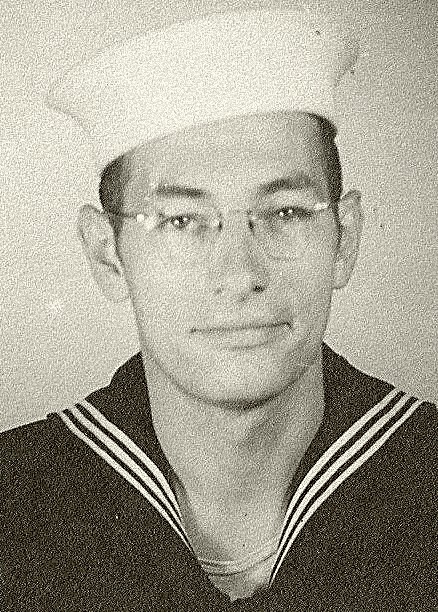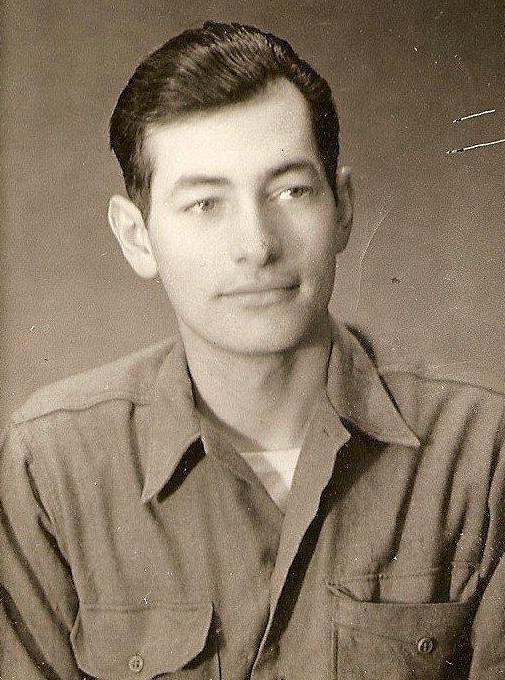Samuel W. Engelman


When I was drafted, I volunteered for the Navy instead. On March 9,
1945, I went into the Navy at Bainbridge, Maryland for basic training.
I was in Company 4096 and graduated May 9, 1945. After basic training,
they gave me 10 days of leave to go home. I was then sent to San Diego,
California to the Ship Repair Base. There were 15 sailors in one rail
car traveling across the country. One older sailor was in charge. He
would take us to the dining car to eat. We were not allowed to go into
any other passenger cars. While in San Diego I was assigned to a
floating dry dock. After 6 weeks, we were sent to San Bruno, California
(15 miles south of San Francisco). We were taking Commando training for
the planned invasion of Japan. After the beach was secure we were
supposed to be part of a ship repair outfit to repair ships. Then we
dropped the atomic bomb on Japan and that was the end of the war with
Japan. We did odd jobs on the base until October 1945.
On October 1st 1945 we went to Treasure Island. The next day we went to
Oakland and were assigned to the USS War Hawk (AP-168), which carried
troops and cargo. We went to San Francisco one day and then left on 6
October and took 10 days to get to Pearl Harbor. We spent 13 days there
loading more equipment and troops. We stopped one day at Buckner Bay,
Okinawa and unloaded mail. We were not allowed to leave the ship. When
we got near China, there were so many rumors about communists fighting
with the Nationalist Chinese that our officers decided to stop at
Shanghai, arriving on November 8, 1945. We were there 3 days. I got to
go sightseeing in town one day. When the Admiral heard about that we
stopped at Shanghai instead of continuing on, he said “go where your
orders tell you.” That was 900 miles north of Shanghai to Tangku at
mouth of the Hai River. We got there on November 15, 1945. We were on
that troup ship 45 days from the time we left San Francisco until we
got to China.
We set up a supply base at the mouth of the river. We were in a group
called GROPAC 13 to supply the troops inland. The Japanese had invaded
China 7 years before WW II. But now that the war with Japan was over,
the Japanese soldiers had to go home. They were coming to the dock by
train and walked aboard ships to go home. They were doing this on their
own. We did not assist them in any way. We would load supplies in
trains for our troops inland. We lived in brick buildings that the
Japanese built with no running water or bathrooms. We put wood stoves
in and later converted them to oil. We built shower rooms outside. We
ate outside in field kitchens. Later we moved indoors. We only got 2
meals a day. We went out to eat a lot. One time we got to a restaurant
that was closed for selling dog meat; we had eaten there the day
before. At first I was in the car pool. Later I was assigned to the
heavy equipment. Seven of us were heavy equipment operators and
licensed to drive everything on the base. We all worked together and
hauled a lot of heavy equipment to the Marine Base inland. I did a lot
of lifting with cranes & bulldoze work when needed. We also did all
our own maintenance work on our equipment. I made third class motor
machinist mate (MoMM3c).
The Navy built a water purifying plant that we operated. The Navy then
hired Chinese labor to do our labor for 7 cents a day. The people would
get half and the company that they worked for would get half of their
pay. The weather was like Pennsylvania because we on the opposite side
of the world from Pennsylvania. We were not restricted to the base and
could go wherever we wanted to on liberty. Near the end they would not
let us off the base without a 45 strapped on us because of the
Communists. By June I had enough points to be discharged and left there
on June 3rd 1946 and traveled by ship to San Diego. From there we went
to Bainbridge MD via train and I was discharged June 30, 1946.
Samuel W. Engelman



